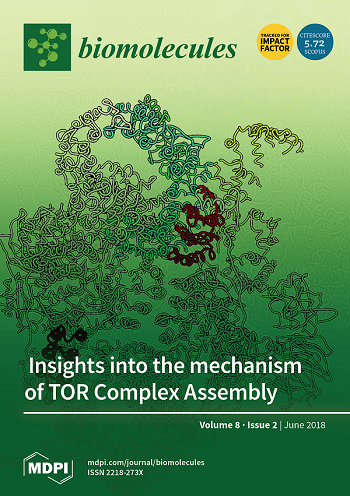Biosynthesis of Arabinoside from Sucrose and Nucleobase via a Novel Multi-Enzymatic Cascade
IF 4.8
2区 生物学
Q1 BIOCHEMISTRY & MOLECULAR BIOLOGY
引用次数: 0
Abstract
Arabinoside and derived nucleoside analogs, a family of nucleoside analogs, exhibit diverse typically biological activities and are widely used as antibacterial, antiviral, anti-inflammatory, antitumor, and other drugs in clinical and preclinical trials. Although with a long and rich history in the field of medicinal chemistry, the biosynthesis of arabinoside has only been sporadically designed and studied, and it remains a challenge. Here, we constructed an in vitro multi-enzymatic cascade for the biosynthesis of arabinosides. This artificial biosystem was systematically optimized, involving an exquisite pathway design, NADP+ regeneration, meticulous enzyme selection, optimization of the key enzyme dosage, and the concentration of inorganic phosphate. Under the optimized conditions, we achieved 0.37 mM of vidarabine from 5 mM of sucrose and 2 mM of adenine, representing 18.7% of the theoretical yield. Furthermore, this biosystem also has the capability to produce other arabinosides, such as spongouridine, arabinofuranosylguanine, hypoxanthine arabinofuranoside, fludarabine, and 2-methoxyadenine arabinofuranoside, from sucrose, and corresponding nucleobase by introducing different nucleoside phosphorylases. Overall, our biosynthesis approach provides a pathway for the biosynthesis of arabinose-derived nucleoside analogs, offering potential applications in the pharmaceutical industry.通过新型多酶级联从蔗糖和核苷酸中生物合成阿拉伯苷
阿拉伯苷及其衍生核苷类似物是核苷类似物的一个家族,具有多种典型的生物活性,被广泛用作抗菌、抗病毒、抗炎、抗肿瘤等药物的临床和临床前试验。虽然阿拉伯苷在药物化学领域有着悠久而丰富的历史,但对其生物合成的设计和研究还很零散,这仍然是一个挑战。在此,我们构建了一个体外多酶级联,用于阿拉伯苷的生物合成。我们对这一人工生物系统进行了系统优化,包括精致的途径设计、NADP+再生、精细的酶选择、关键酶用量和无机磷酸浓度的优化。在优化条件下,我们从 5 毫摩尔蔗糖和 2 毫摩尔腺嘌呤中获得了 0.37 毫摩尔的维达拉宾,占理论产量的 18.7%。此外,该生物系统还能通过引入不同的核苷磷酸化酶,从蔗糖和相应的核碱基生产其他阿拉伯苷,如海绵尿苷、阿拉伯呋喃糖基鸟嘌呤、次黄嘌呤阿拉伯呋喃糖苷、氟达拉滨和 2-甲氧基腺嘌呤阿拉伯呋喃糖苷。总之,我们的生物合成方法为阿拉伯糖衍生核苷类似物的生物合成提供了一条途径,具有在制药业应用的潜力。
本文章由计算机程序翻译,如有差异,请以英文原文为准。
求助全文
约1分钟内获得全文
求助全文
来源期刊

Biomolecules
Biochemistry, Genetics and Molecular Biology-Molecular Biology
CiteScore
9.40
自引率
3.60%
发文量
1640
审稿时长
18.28 days
期刊介绍:
Biomolecules (ISSN 2218-273X) is an international, peer-reviewed open access journal focusing on biogenic substances and their biological functions, structures, interactions with other molecules, and their microenvironment as well as biological systems. Biomolecules publishes reviews, regular research papers and short communications. Our aim is to encourage scientists to publish their experimental and theoretical results in as much detail as possible. There is no restriction on the length of the papers. The full experimental details must be provided so that the results can be reproduced.
 求助内容:
求助内容: 应助结果提醒方式:
应助结果提醒方式:


